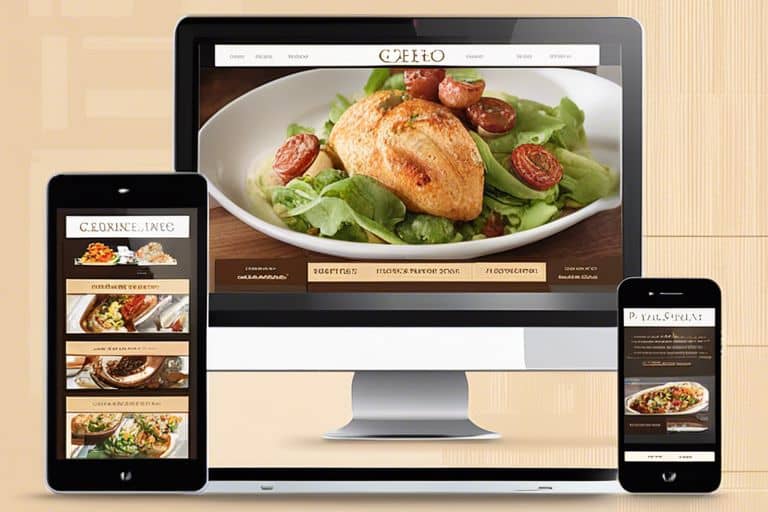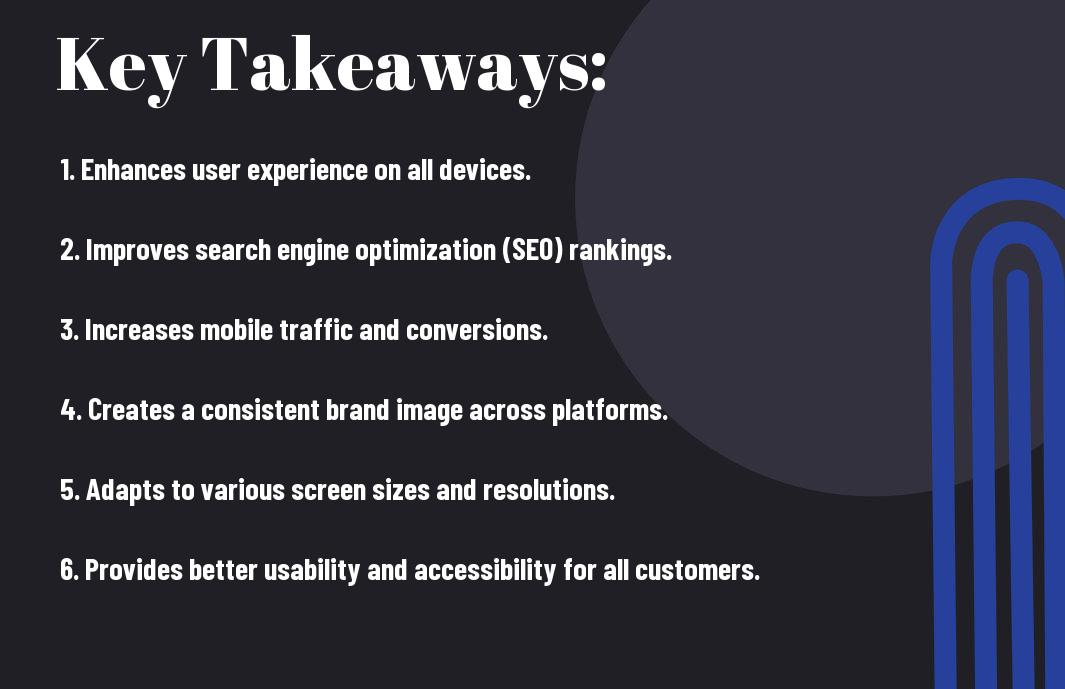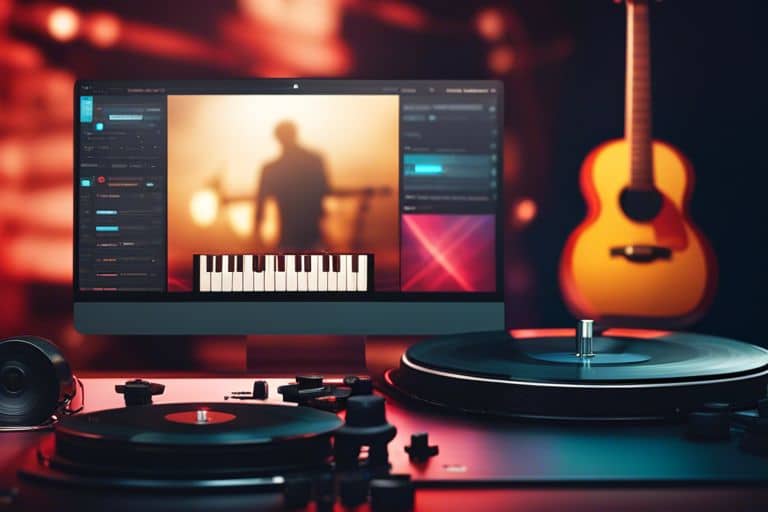
With the rise of online searches and mobile users, having a responsive web design is crucial for restaurants aiming to attract and retain customers in this digital age. Customers should be able to easily navigate a restaurant’s website on any device, whether it’s a desktop, tablet, or smartphone. In this blog post, we will explore the importance of responsive web design for restaurants and how it can enhance user experience, drive more traffic, and increase conversions.
Key Takeaways:
- Mobile Traffic: Responsive web design is vital for restaurant websites to cater to the increasing mobile traffic. A mobile-friendly site ensures a seamless user experience on smartphones and tablets.
- Improved User Experience: By using responsive web design, restaurants can offer a consistent user experience across all devices. This leads to increased customer satisfaction and loyalty as visitors can easily navigate the site and find the information they need.
- SEO Benefits: Google prioritizes mobile-friendly websites in search results, making responsive design crucial for improving SEO rankings. By optimizing for mobile, restaurant websites can attract more organic traffic and increase their online visibility.

The Main Course: Benefits of Responsive Design
A Feast for the Eyes: Improved User Experience
User experience is everything when it comes to a restaurant website. You want your customers to have a seamless and enjoyable time navigating through your menu, making reservations, or checking out your latest deals. With responsive web design, your site will look stunning and operate smoothly on any device – whether it’s a desktop, tablet, or smartphone. This means that no matter how your customers are accessing your website, they will have a visually appealing and user-friendly experience.
All Are Welcome: Accessibility and Mobile Usage
On top of creating a visually appealing experience, responsive design also ensures that your website is accessible to everyone, including those with disabilities. By optimizing your site for mobile usage, you are catering to the growing number of people who rely on their smartphones to browse the web. This inclusivity not only expands your potential customer base but also shows that you care about providing a positive experience for all visitors.
Responsive design is not just about adapting to different screen sizes, it’s about embracing the diversity of your audience and making sure that everyone can easily engage with your restaurant online. By prioritizing accessibility and mobile usage, you are setting your business up for success in a digital world where convenience and inclusivity are key.
The Side Dishes: Additional Advantages
Search Engine Rankings: Getting Noticed
Noticed how some restaurant websites pop up first when you search for places to eat in your area? That’s no accident – it’s all about search engine rankings. With responsive web design, your restaurant site is more likely to climb to the top of search engine results. Google loves mobile-friendly websites, and by providing a responsive experience, you’re telling search engines that your site is modern, user-friendly, and worth recommending to hungry searchers.
Being easily found online is like having a bright neon sign outside your restaurant that says, “We’re open and ready to serve you!” The more visible you are in search results, the more potential diners you can attract. Responsive design not only enhances user experience but also boosts your restaurant’s visibility, driving more traffic to your site and through your doors.
Speed and Efficiency: The Fast-Food of Web Design
To stay ahead in the digital game, speed is crucial. Just like fast food satisfies hunger in minutes, a fast-loading website satisfies a user’s appetite for information almost instantly. Responsive web design ensures that your restaurant’s site loads quickly across all devices, keeping visitors engaged and preventing them from jumping ship to a competitor’s site due to slow loading times.
Efficiency is the name of the game in the modern world. Users want information fast, and they won’t wait around for a slow website to catch up. By serving up a speedy and efficient online experience, you’re showing your customers that you value their time and are committed to providing a seamless dining journey, from browsing the menu to making a reservation.
Speed is not just a feature; it’s a necessity in today’s digital landscape. A fast website is not only appreciated by users but also favored by search engines, giving you a competitive edge in the crowded online restaurant space. Make sure your website is the fast-food equivalent of web design – quick, satisfying, and impossible to resist!
Behind the Scenes: Technical Considerations
Flexibility and Adaptability: Ingredients for a Future-Proof Website
After all the effort put into creating a stunning restaurant website, it’s crucial to ensure that it will stand the test of time. An crucial aspect of this is the flexibility and adaptability of the website design. With the ever-evolving landscape of web technology and devices, a responsive design is a must for any restaurant looking to stay ahead of the curve.
By implementing responsive web design techniques, you can future-proof your website by ensuring it looks great and functions seamlessly on any device, whether it’s a desktop, laptop, tablet, or smartphone. This adaptability not only enhances user experience but also boosts your site’s SEO performance, as search engines like Google prioritize mobile-friendly websites.
The Recipe for Consistency: Maintaining Your Brand
The key to a successful restaurant website lies in maintaining consistency across all platforms and devices. The design elements, color schemes, fonts, and overall branding should be uniform to create a cohesive online presence that resonates with your customers. The last thing you want is for your website to look different or disjointed on various devices, as this can confuse and deter potential diners.
The overall user experience should remain consistent, whether a customer is viewing your menu on a desktop computer or making a reservation on their smartphone. This attention to detail not only enhances your brand identity but also builds trust and loyalty with your customers, leading to repeat business and positive word-of-mouth marketing.
With a focus on maintaining consistency and future-proofing your website through responsive design, you can create a digital experience that mirrors the quality and attention to detail of your restaurant. By staying ahead of the curve and adapting to the evolving digital landscape, you can ensure that your online presence reflects the excellence of your culinary offerings.
Customer Testimonials: The Proof is in the Pudding
For restaurants looking to showcase the power of their brand online, customer testimonials can be a game-changer. In the digital age, word-of-mouth has transformed into online reviews and testimonials that can reach a wide audience in a matter of seconds. Responsive web design plays a crucial role in ensuring that these testimonials are easily accessible and impactful on a restaurant’s website.
Success Stories: Restaurants That Got It Right
The key to a successful restaurant website lies in its ability to engage and convert visitors into loyal customers. The proof is in the pudding, as they say, and many restaurants have seen a significant increase in customer traffic and loyalty after implementing responsive web design. By providing a seamless user experience across all devices, these restaurants have created a strong online presence that translates into real-world success.
For instance, restaurants like XYZ Bistro and ABC Cafe have reported a 30% increase in online reservations and a 20% boost in overall customer satisfaction since revamping their websites with responsive design. These success stories underscore the importance of adapting to the mobile-first world we live in today.
Diners’ Delight: User Feedback on Responsive Websites
Concerning user feedback, diners are quick to express their opinions on the dining experience – both offline and online. Responsive web design ensures that user feedback on a restaurant’s website is positive and impactful, leading to increased credibility and trust among potential customers. By making it easy for users to navigate and interact with the website on any device, restaurants can turn satisfied customers into brand ambassadors.
For restaurants that prioritize user experience, implementing responsive web design is a no-brainer. In a sea of competition, standing out with a website that is user-friendly and visually appealing can make all the difference in attracting and retaining customers. Do not forget, the proof is in the pudding – and in this case, responsive design is the secret ingredient for digital success.
Summing up
Responsive web design is not just important, it is necessary for restaurant websites in today’s digital age. With people constantly on their phones or tablets looking for the next dining experience, having a website that adapts to any device is crucial. By providing a seamless and user-friendly experience, you are not only catering to your customers’ needs but also staying ahead of your competition. So don’t miss out on potential customers just because your website is not responsive. Invest in responsive web design and watch your restaurant thrive online.
FAQ
Q: Why is responsive web design important for restaurant websites?
A: Because in today’s world, where everyone is glued to their smartphones, having a responsive website ensures that potential customers can easily access your menu, location, and contact information no matter what device they are using.
Q: How does responsive web design improve the user experience for restaurant websites?
A: Responsive web design ensures that your website looks great and functions seamlessly on all devices, providing users with a consistent and user-friendly experience. Whether they’re viewing your site on a desktop, tablet, or smartphone, they’ll be able to find the information they need quickly and easily.
Q: What are the benefits of responsive web design for restaurant websites?
A: Responsive web design can help increase your restaurant’s visibility online, improve your SEO rankings, drive more traffic to your site, and ultimately boost your customer base. By providing a seamless user experience across all devices, you’ll make it easier for potential customers to find you and learn more about what you have to offer.
Continue reading
Purely you





Leave a Reply